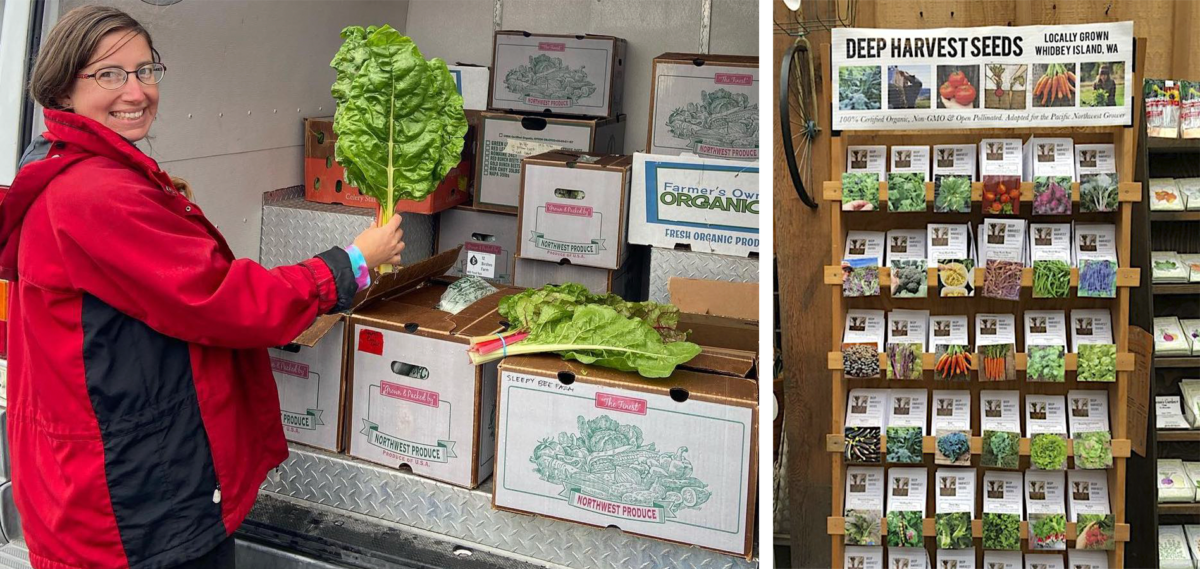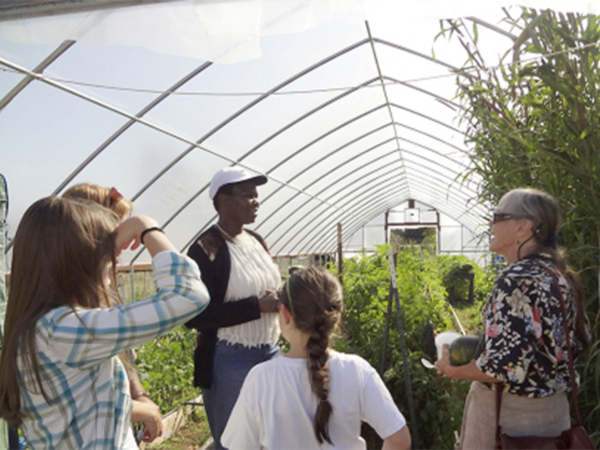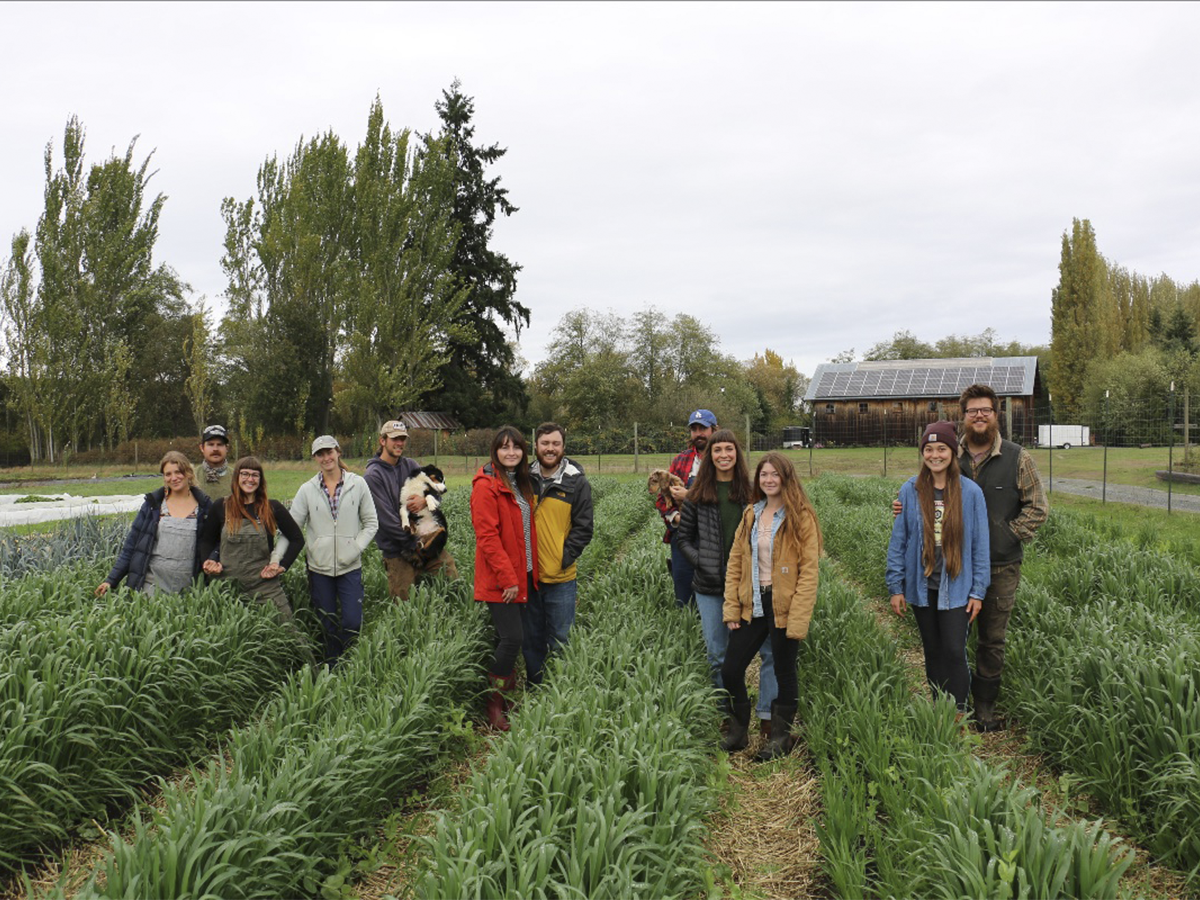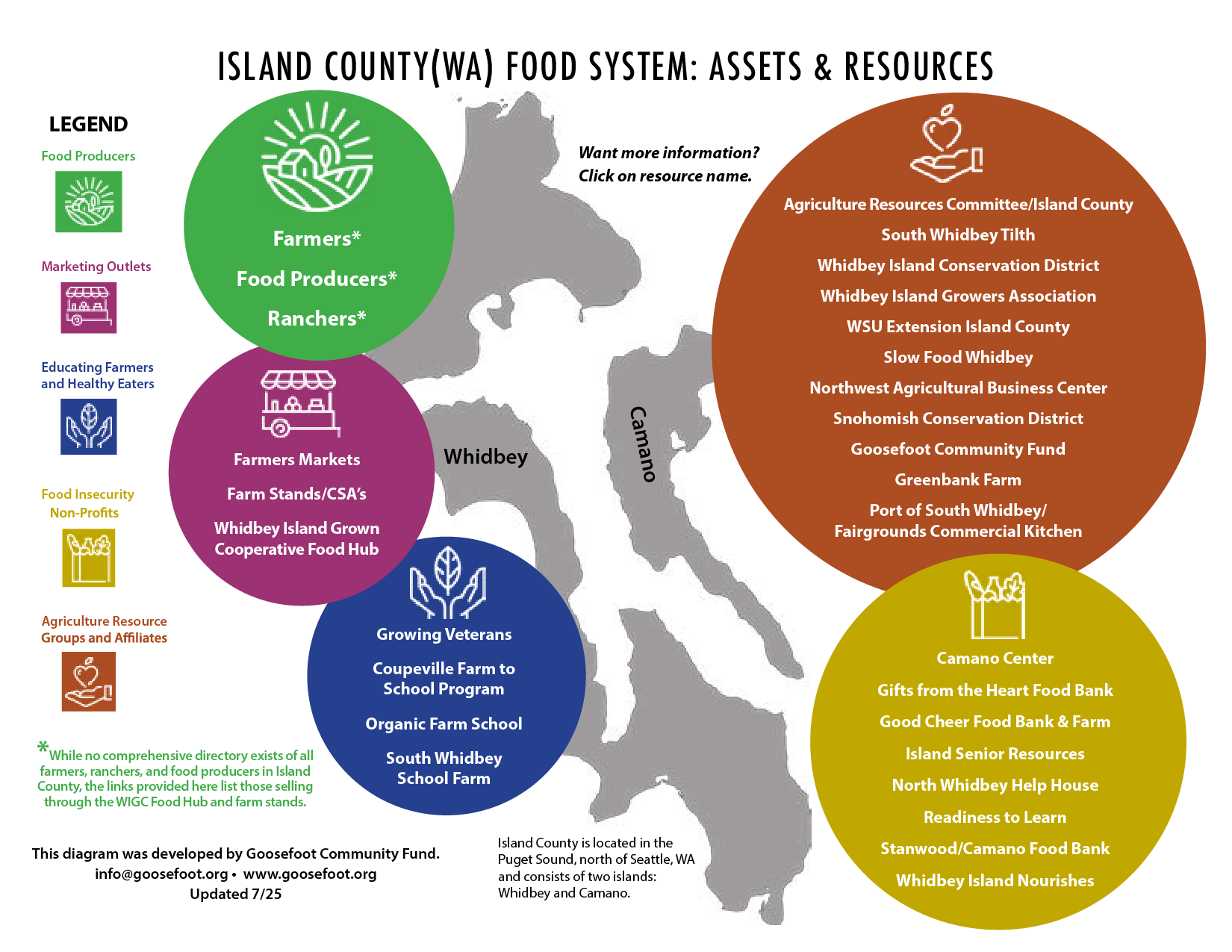Goosefoot and Island County’s Food System
Goosefoot supports our local agricultural community through marketing assistance and collaborative efforts aimed at strengthening the resiliency of our local food system.
Agriculture on Whidbey Island
Whidbey Island has a rich agricultural history, beginning with the original Native inhabitants who fished local waters and foraged other wild foods, eventually cultivating and growing potatoes, nettles, Camas, and berries. In the mid-1800s, when Euro-American settlers took the land, the production of wheat, potatoes, loganberries, cattle, and dairy products flourished, especially in North and Central Whidbey. At one time during the late 1800s, Ebey’s Prairie produced the highest yield of wheat per acre in the country.

With the onset of agricultural industrialization in the early 1940s, many of the larger farms on North Whidbey were sold to the U.S. Navy and other developers. Those that survived were smaller and adapted by diversifying what was grown, how it was grown, and by providing a level of quality and care that big industrial farms could not.
Today, you’ll find a cornucopia of smaller farms on the Island—from north to south—producing a wide variety of crops and animals primarily for local and regional consumption. A majority are either certified organic or use even healthier farming practices such as the principles of regenerative agriculture.
Securing the Future of our Food
Over the past 20 years, Whidbey Island’s agriculture community has grown to include a network of educationa, marketing, and support organizations and services. Together with our farms, these provide a strong foundation from which to improve food production, access, and resiliency. For a glance at the assets and resources that make up our local food system, click here.
The COVID pandemic brought to light the problems with our national food supply chain and the risks of profit-driven consolidation of distribution centers. Climate change will continue to bring increased droughts and flooding to major agricultural producing states, affecting supplies and prices in local grocery stores. The availability of locally grown and produced food has become more important than ever.

“Eating local” isn’t just a catchphrase—it’s becoming a necessity. Ensuring that our Whidbey Island farmers and ranchers are as successful as possible isn’t just good for the economy. It’s about ensuring an available food supply in both good times and during emergencies. Now is the time for us to work together and use the agricultural land, resources, and know-how we already have to their best potential.
Goosefoot’s History of Food Support
In June of 2013, Goosefoot Community Fund’s board of directors asked staff to research and identify concrete ways to help strengthen Whidbey Island’s local food system. Over the last several years, the following initiatives were either developed or supported by Goosefoot:
- The Agriculture Resources Committee for Island County (ARCIC) was co-founded by Goosefoot and we actively contribute management & administrative assistance to the group;
- The Whidbey Island Farm Stand Directory is updated and available both on-line and as a printed brochure;
- The workshop Introduction to Food Business Licensing Requirements was developed by Goosefoot staff;
- The Organic Farm School, Coupeville Farm to School Program, and Whidbey Island Grown Cooperative received start-up grants from Goosefoot;
- The South Whidbey School Farm received $270,000 in seed money through Goosefoot grants and a three-year community matching grant program through the Goose Grocer.
In October 2020—during the heart of the pandemic—Goosefoot convened over 25 farmers, ranchers, agricultural resource groups and allies, and charities addressing food insecurity to work together on ways to strengthen food resiliency on Whidbey Island. Meeting regularly for over a year as the Whidbey Island Food Resiliency Consortium, the group identified 1) confusion about local & state food safety regulations; 2) the lack of food, meat, and poultry processing facilities; and 3) the lack of access to affordable farmland as the main barriers to achieving food security.
Agricultural Resources Advisory Committee/Island County (ARCIC)
Out of Whidbey Island Food Resiliency Consortium, a smaller, more focused group developed to discuss how to address the three barriers listed above. Early on, ARCIC recognized the important role local government plays in overseeing and regulating agriculture and food production. While not an official advisory committee to Island County, ARCIC considers our Commissioners and the Health, Planning, and Assessor’s departments as important partners in helping to build a resilient food system.

“Agriculture is an important part of life in Island County, providing jobs, preserving open space, contributing to local food production, and drawing business, residents, and tourists to the area.”
–Island County Comprehensive Plan, Land Use Element, 2016
We envision a team that responds to issues agricultural producers may be facing, and works collaboratively to find solutions. More importantly, we want to be pro-active in identifying and acting on opportunities to assist our farmers, ranchers, and value-added food producers to be as successful as possible.



